Exploratory data analysis is one of the best practices used in data science today. While starting a career in Data Science, people generally don’t know the difference between Data analysis and exploratory data analysis. There is not a very big difference between the two, but both have different purposes.

Exploratory Data Analysis(EDA): Exploratory data analysis is a complement to inferential statistics, which tends to be fairly rigid with rules and formulas. At an advanced level, EDA involves looking at and describing the data set from different angles and then summarizing it.
Data Analysis: Data Analysis is the statistics and probability to figure out trends in the data set. It is used to show historical data by using some analytics tools. It helps in drilling down the information, to transform metrics, facts, and figures into initiatives for improvement.
We will explore a Data set and perform the exploratory data analysis in python. You can refer to our python course online to get on board with python.
The major topics to be covered are below:
– Handle Missing value
– Removing duplicates
– Outlier Treatment
– Normalizing and Scaling( Numerical Variables)
– Encoding Categorical variables( Dummy Variables)
– Bivariate Analysis

We will be loading the EDA cars excel file using pandas. For this, we will be using read_excel file.
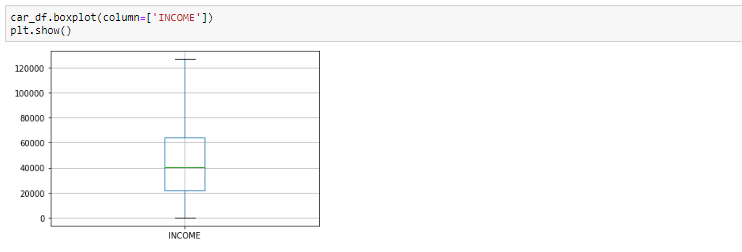
Box-plot after removing outliers
In this step, we will perform the below operations to check what the data set comprises of. We will check the below things:
– head of the dataset
– the shape of the dataset
– info of the dataset
– summary of the dataset
The shape attribute tells us a number of observations and variables we have in the data set. It is used to check the dimension of data. The cars data set has 303 observations and 13 variables in the data set.

info() is used to check the Information about the data and the datatypes of each respective attribute.
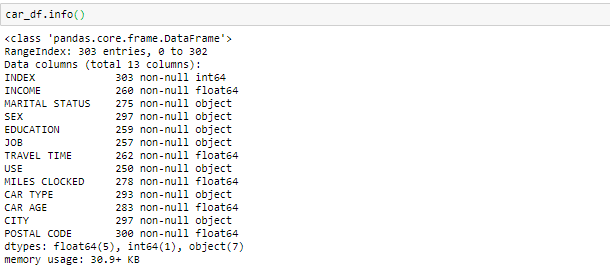
Looking at the data in the head function and in info, we know that the variable Income and travel time are of float data type instead of the object. So we will convert it into the float. Also, there are some invalid values like @@ and ‘*’ in the data which we will be treating as missing values.
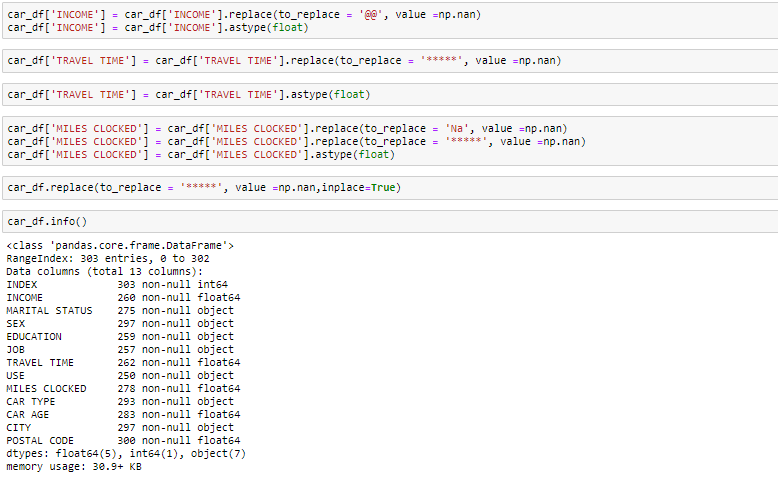
The described method will help to see how data has been spread for numerical values. We can clearly see the minimum value, mean values, different percentile values, and maximum values.

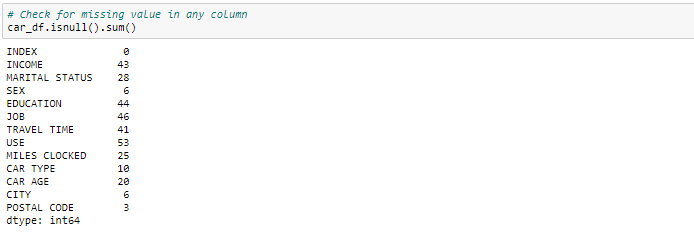
We can see that we have various missing values in the respective columns. There are various ways of treating your missing values in the data set. And which technique to use when is actually dependent on the type of data you are dealing with.
In this exercise, we will replace the numerical columns with median values and for categorical columns, we will drop the missing values.



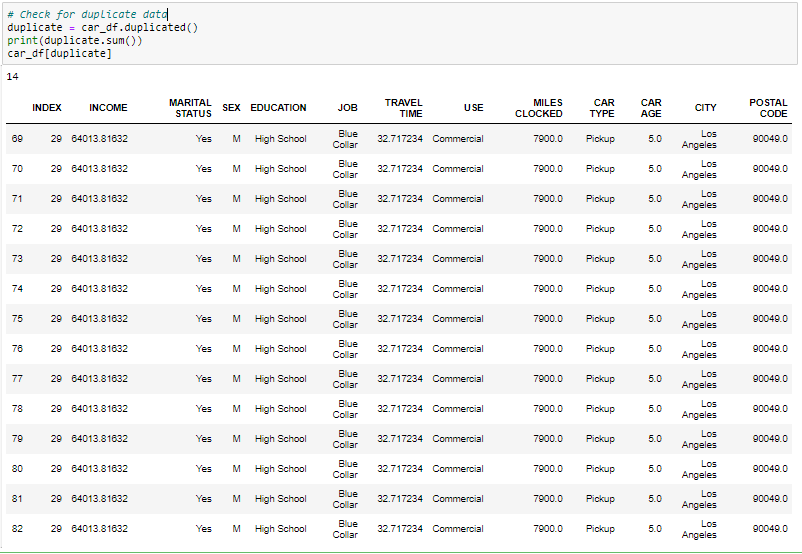
Since we have 14 duplicate records in the data, we will remove this from the data set so that we get only distinct records. Post removing the duplicate, we will check whether the duplicates have been removed from the data set or not.
![]()

Outliers, being the most extreme observations, may include the sample maximum or sample minimum, or both, depending on whether they are extremely high or low. However, the sample maximum and minimum are not always outliers because they may not be unusually far from other observations.
We Generally identify outliers with the help of boxplot, so here box plot shows some of the data points outside the range of the data.
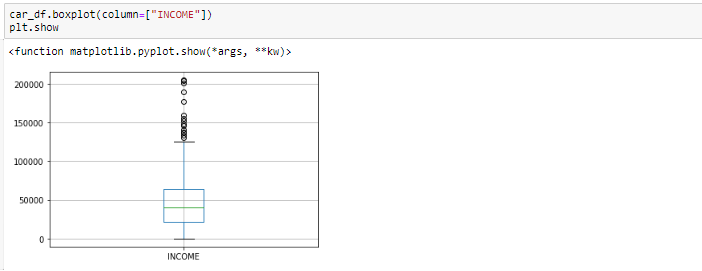
Box-plot before removing outliers
Looking at the box plot, it seems that the variables INCOME, have outlier present in the variables. These outliers value needs to be teated and there are several ways of treating them:

#Boxplot After removing outlier

When we talk about bivariate analysis, it means analyzing 2 variables. Since we know there are numerical and categorical variables, there is a way of analyzing these variables as shown below:
1. Scatterplot
2. Line plot
3. Heatmap for correlation
4. Joint plot
1. Bar chart
2. Violin plot
3. Categorical box plot
4.Swarm plot
1. Bar chart
2. Grouped bar chart
3. Point plot
If we need to find the correlation-

Correlation between all the variables
Often the variables of the data set are of different scales i.e. one variable is in millions and others in only 100. For e.g. in our data set Income is having values in thousands and age in just two digits. Since the data in these variables are of different scales, it is tough to compare these variables.
Feature scaling (also known as data normalization) is the method used to standardize the range of features of data. Since the range of values of data may vary widely, it becomes a necessary step in data preprocessing while using machine learning algorithms.
In this method, we convert variables with different scales of measurements into a single scale. StandardScaler normalizes the data using the formula (x-mean)/standard deviation. We will be doing this only for the numerical variables.


One-Hot-Encoding is used to create dummy variables to replace the categories in a categorical variable into features of each category and represent it using 1 or 0 based on the presence or absence of the categorical value in the record.
This is required to do since the machine learning algorithms only work on the numerical data. That is why there is a need to convert the categorical column into a numerical one.
get_dummies is the method that creates a dummy variable for each categorical variable.




Ritika Singh – Data Scientist
I am a Data scientist by profession and a Blogger by passion. I have been working on machine learning projects for more than 2 years. Here you will find articles on “Machine Learning, Statistics, Deep Learning, NLP and Artificial Intelligence”.
Lorem ipsum dolor sit amet, consectetur adipiscing elit,
Why did you treat postal code as a numerical variable? It is not meaningful to represent it that way, since a numerical value for postal code will be misinterpreted by any machine learning algorithm. For example, the postal code "90049" will be matched with a label based on the correlation and the postal code "300" will be matched to the other label since it has a lower value, which is incorrect. It would be better represented as a categorical variable, even if there are many unique observations.
Hi Ritika, Can you pls. help me with the csv file that you used for this tutorial? I would like to use the file to learn the steps taught here.
cool and clear its easy to understand tq for the explanation i fall in love with ur blog
found the blog on "EDA with Python' very useful . But there is a humongous distraction in the site. The floating ads(of courses offered by you) in the page are a huge distraction. Not sure how anyone from the page admin has not noticed it. The content of this blog is awesome though
Thanks alot for this. Am glad i came across this.
I appreciate your work. Thanks
Hi Ritika, Really nice blog, I liked it and wanted to learn more from you
Thanks Ritika for the nice explanation.
I am interested to know the basics on how to analyze data, get rid of duplicates and missing values.
Where can I find the dataset to follow and practice the code? Thank you in advance.